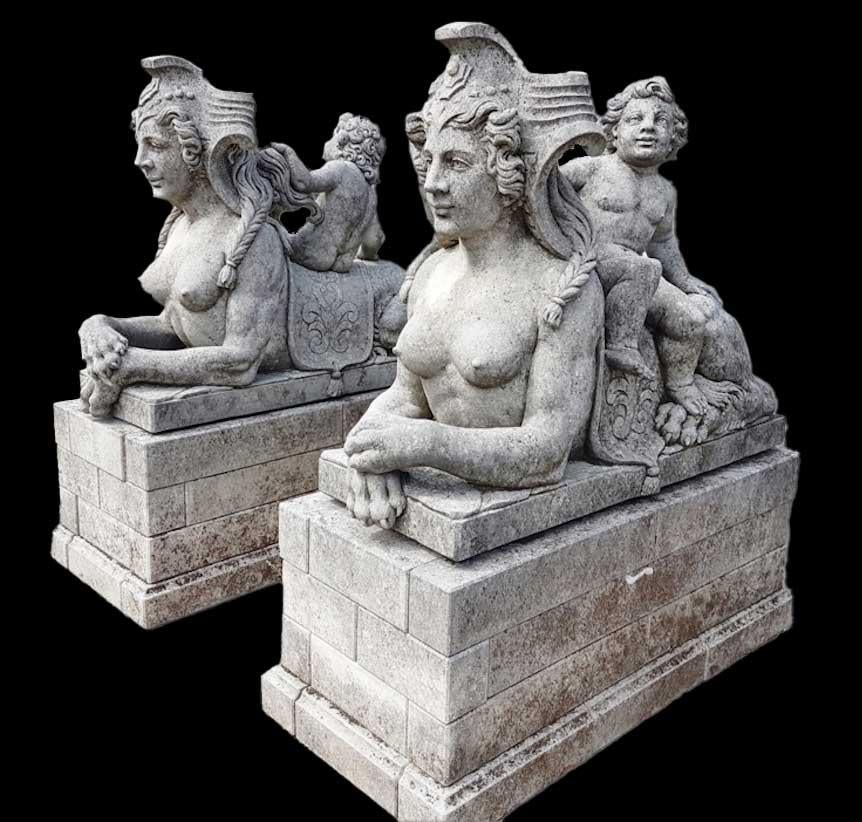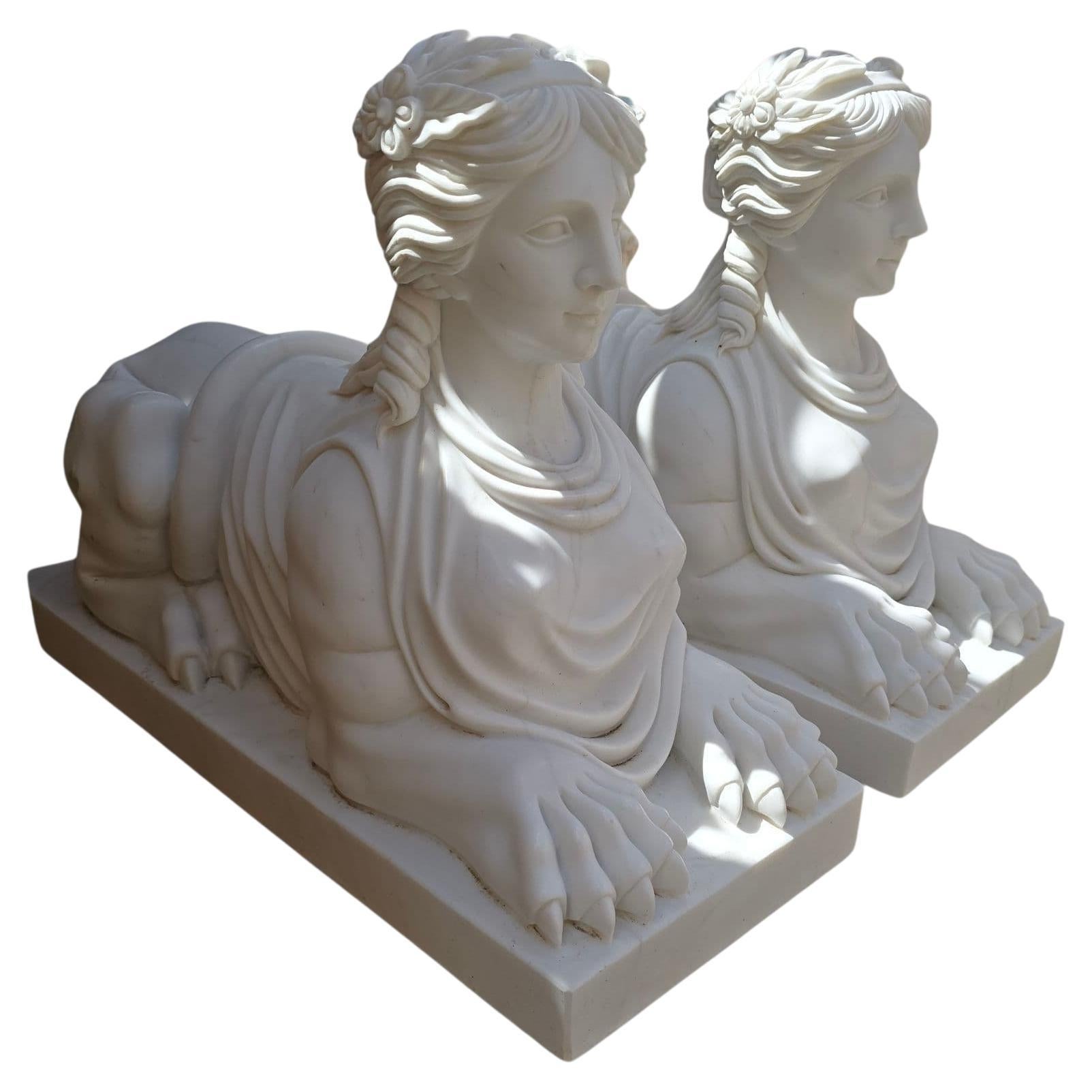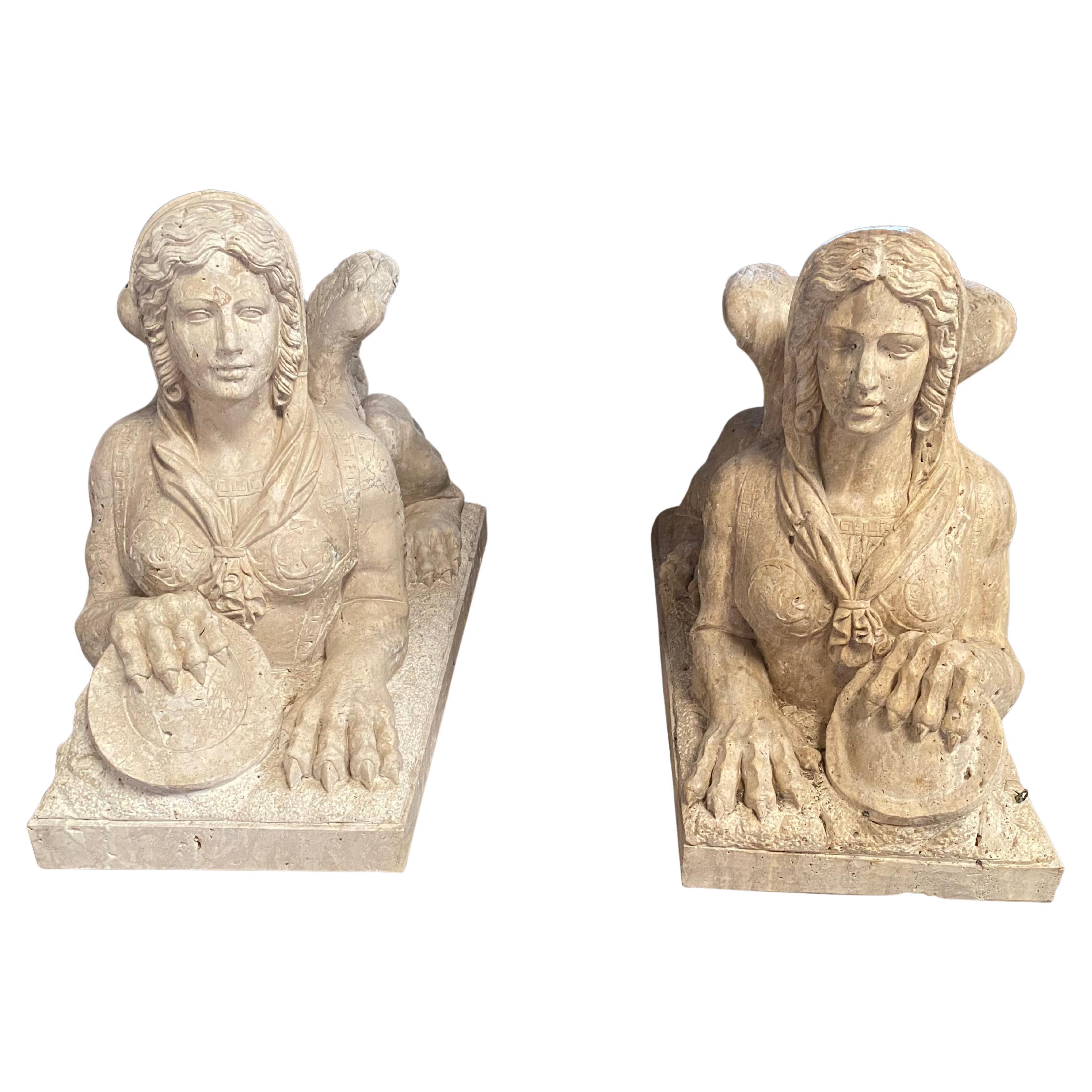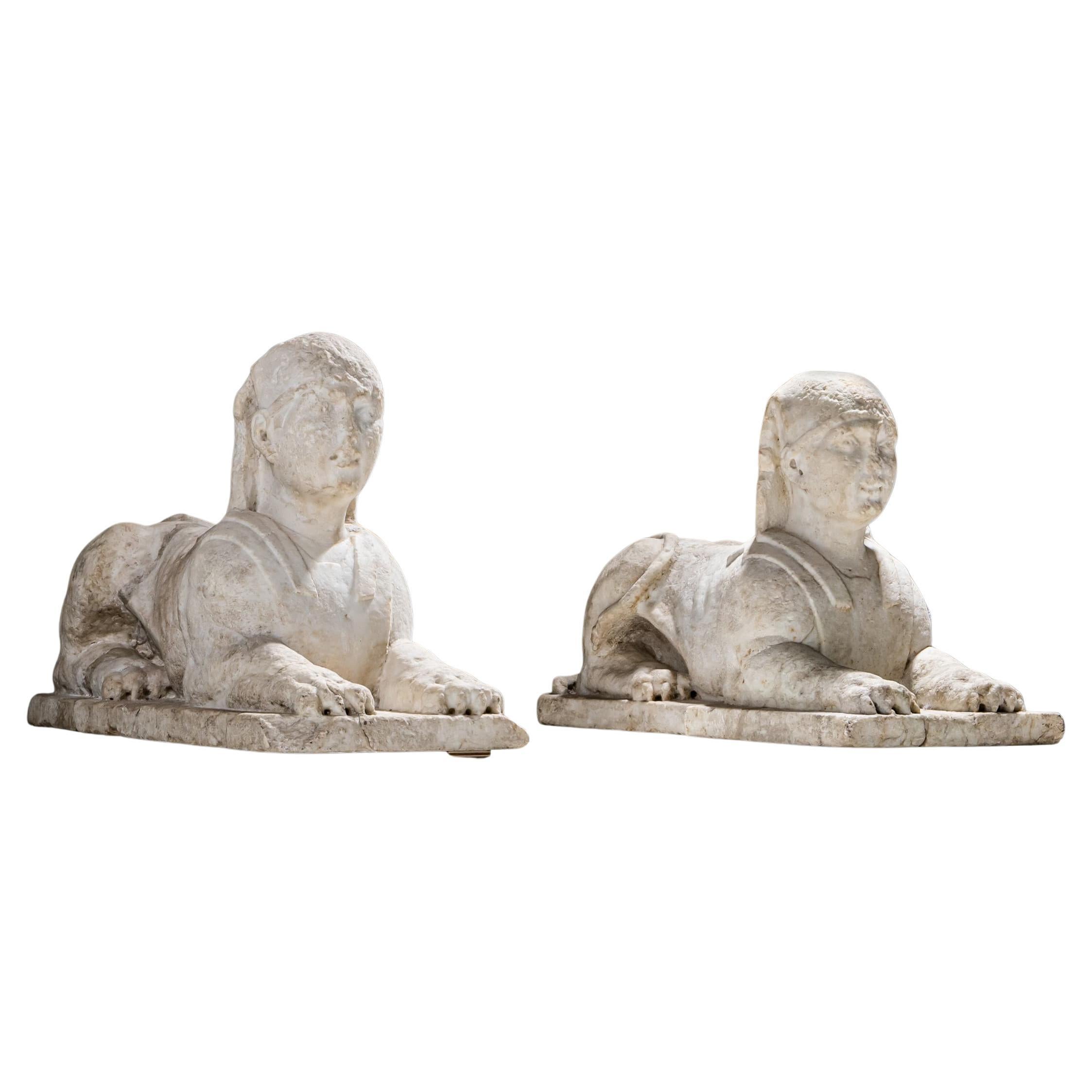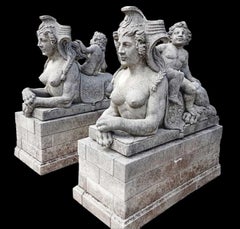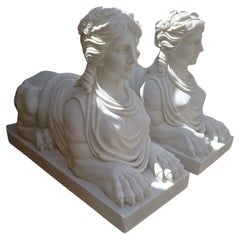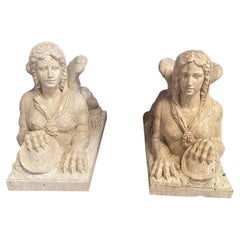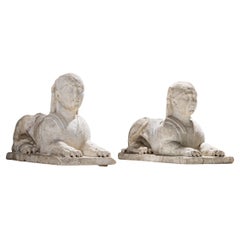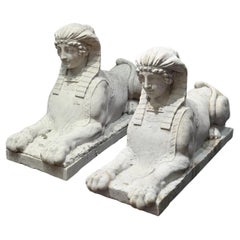Items Similar to Pair of Exceptional Italian Sphinx Limestone Statues
Want more images or videos?
Request additional images or videos from the seller
1 of 11
UnknownPair of Exceptional Italian Sphinx Limestone Statues2022
2022
$41,924.29
£31,349.94
€35,000
CA$57,761.19
A$62,996.70
CHF 33,371.40
MX$755,240.92
NOK 425,003.29
SEK 388,633.97
DKK 266,713.95
About the Item
Designed as entrance guardians, this pair of mythical lady sphinx statuary display the head and chest of a neoclassical woman and the body of a recumbent lion on a rectangular stone base. Very good condition with light grey patina due to age and ware of time.
A timeless piece for your garden decoration.
Available a pair .
About the Seller
5.0
Vetted Professional Seller
Every seller passes strict standards for authenticity and reliability
1stDibs seller since 2018
34 sales on 1stDibs
Typical response time: 7 hours
- ShippingRetrieving quote...Shipping from: Rome, Italy
- Return Policy
More From This Seller
View AllPair of Exceptional Italian Sphinx Limestone Statues
Located in Rome, IT
Designed as entrance guardians, this pair of mythical lady sphinx statuary display the head and chest of a neoclassical woman and the body of a recu...
Category
2010s Baroque Figurative Sculptures
Materials
Limestone
Pair of Exceptional Italian Sphinx Limestone Statues
Located in Rome, IT
Designed as entrance guardians, this pair of mythical lady sphinx statuary display the head and chest of a neoclassical woman and the body of a recumbent lion on a rectangular stone ...
Category
2010s Baroque Figurative Sculptures
Materials
Limestone
Pair of Exceptional Italian Sphinx Limestone Statues
Located in Rome, IT
Designed as entrance guardians, this pair of mythical lady sphinx statuary display the head and chest of a neoclassical woman and the body of a recumbent lion on a rectangular stone ...
Category
2010s Baroque Figurative Sculptures
Materials
Limestone
Pair Italian Limestone Garden Sculptures with Cornucopia
Located in Rome, IT
Finely carved mythological subject in limestone with Cornucopia associated with the harvest, prosperity, or spiritual abundance. Excellent condition from an estate of Veneto.
Measur...
Category
20th Century Academic Figurative Sculptures
Materials
Limestone
Pair Italian Limestone Garden Sculptures with Cornucopia
Located in Rome, IT
Finely carved mythological subject in limestone with Cornucopia associated with the harvest, prosperity, or spiritual abundance. Excellent condition from an estate of Veneto.
Measur...
Category
20th Century Academic Figurative Sculptures
Materials
Limestone
Pair Italian Limestone Garden Sculptures with Cornucopia
Located in Rome, IT
Finely carved mythological subject in limestone with Cornucopia associated with the harvest, prosperity, or spiritual abundance. Excellent condition.
Measurements: Statue cm 160, ba...
Category
20th Century Academic Figurative Sculptures
Materials
Limestone
You May Also Like
Pair of Hand-Carved Italian White Marble Egyptian Sphinx Sculptures, 20th Centur
Located in Madrid, ES
Elegant pair of Egyptian-style sphinx sculptures, hand-carved in white Italian marble during the 20th century. Each figure features the traditional lion body with a serene human face...
Category
Vintage 1970s Abstract Sculptures
Materials
Marble
$4,503 Sale Price
20% Off
Pair of Sphinxes, Marble
Located in Madrid, ES
While this mythological animal with a lion's body and female head is found in ancient Egyptian art, idealization, its proportions and the lines of the sculptures relate them much mor...
Category
20th Century European Neoclassical Animal Sculptures
Materials
Marble
$7,486 / set
Pair of Marble Sphinxes, Italy, 17th Century
Located in Greding, DE
Pair of sphinxes in white marble with weathering traces, preserved with remnants of their original floor slabs. The cut edges suggest they once served as flanking supports at ground ...
Category
Antique 17th Century Italian Figurative Sculptures
Materials
Marble
$81,452 / set
Pair of carved Carrara marble sphinxes
Located in SAINT-OUEN-SUR-SEINE, FR
Exceptional pair of white Carrara marble Sphinxes on rectangular bases. A very noble female bust combined with the powerful body of a lioness, recumbent with her tail lying flat on h...
Category
Early 20th Century French Egyptian Revival Statues
Materials
Carrara Marble
Pair of Large Hand-Carved Stone Sphinx Sculptures, Italy, 1950s
Located in Madrid, ES
Unique and monumental pair of hand-carved stone sphinxes crafted in Italy during the 1950s. Each fantastical creature features a human head, bat-like wings, and a dragon's body—mergi...
Category
Mid-20th Century Statues
Materials
Stone
$21,551 Sale Price
20% Off
Pair of Marble Sphinx Exterior Entryway Statues
Located in New York, NY
This pair from from an estate in Greenwich, Connecticut, adds a touch of classical grandeur to your outdoor space. A sphinx is a mythological creature with a lion's body and a human head, an important image in Egyptian and Greek art and legend.
Despite their age, these statues are in good condition, showcasing the patina and wear that comes with the passage of time. Discoloration from age contributes to their vintage charm, and some repaired cracks in the base indicate a careful restoration process. The statues bear the marks of time with grace, creating a beautifully weathered appearance.
Positioned at the entrance, these Marble Sphinx...
Category
Early 20th Century Statues
Materials
Marble
$50,400 / set
